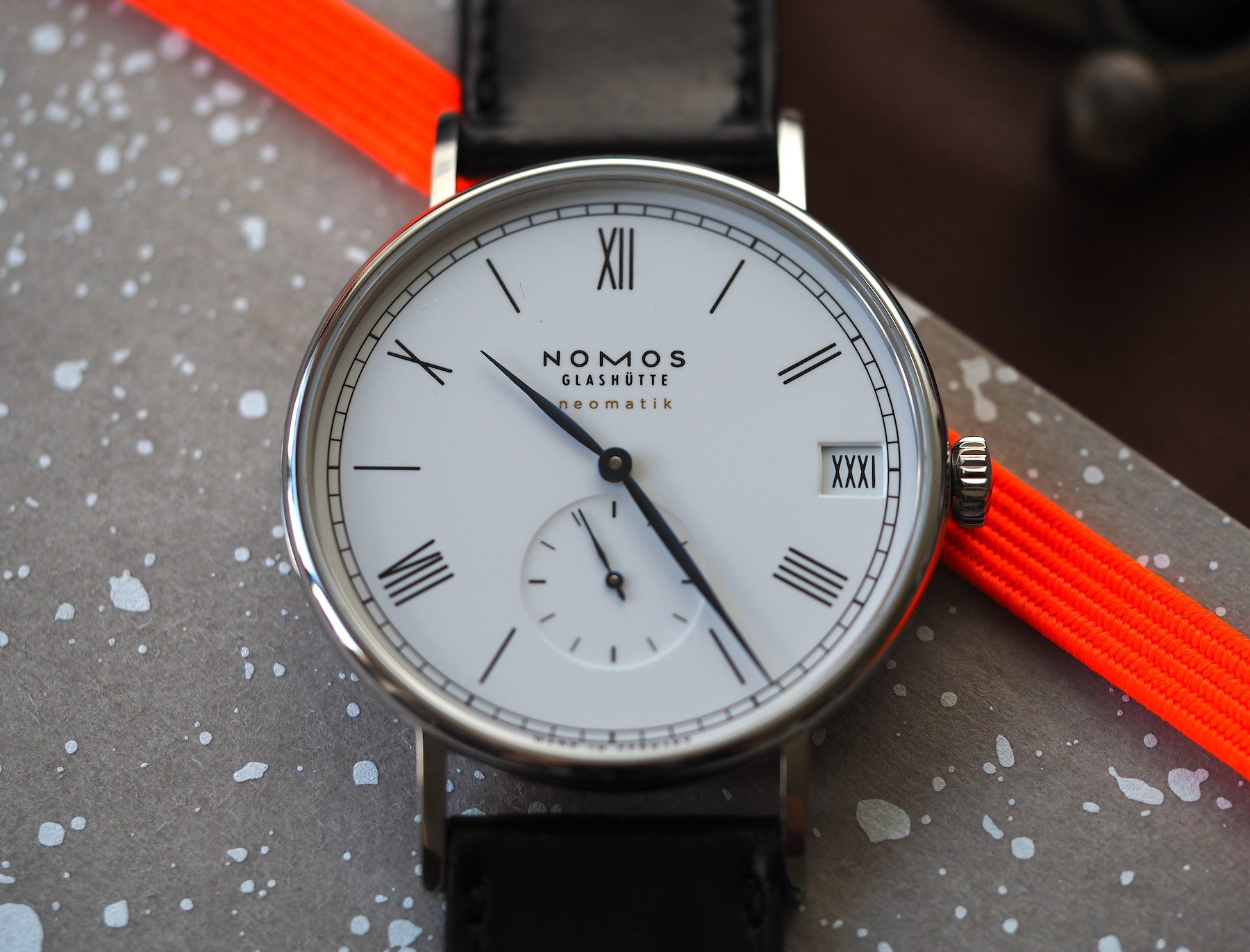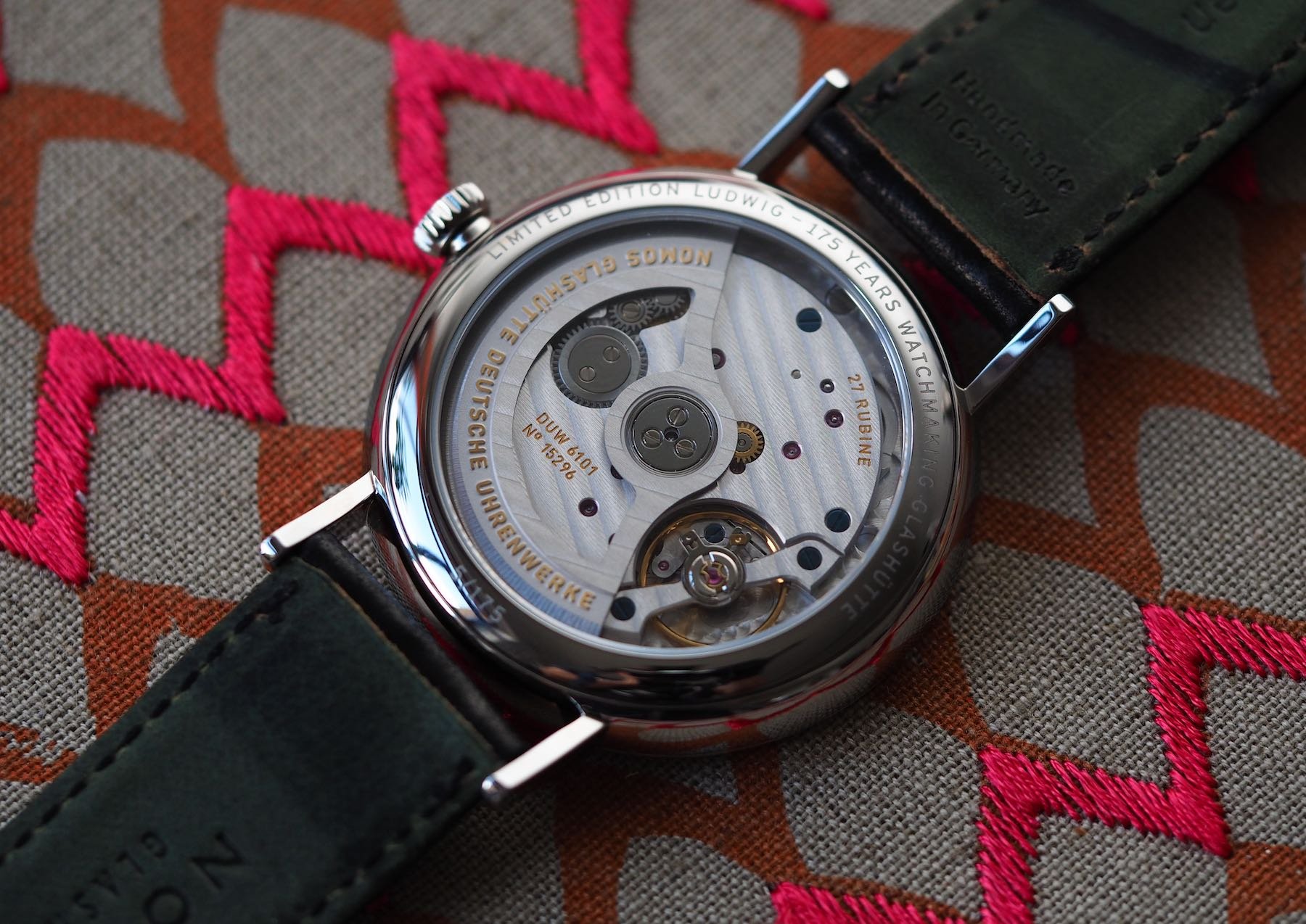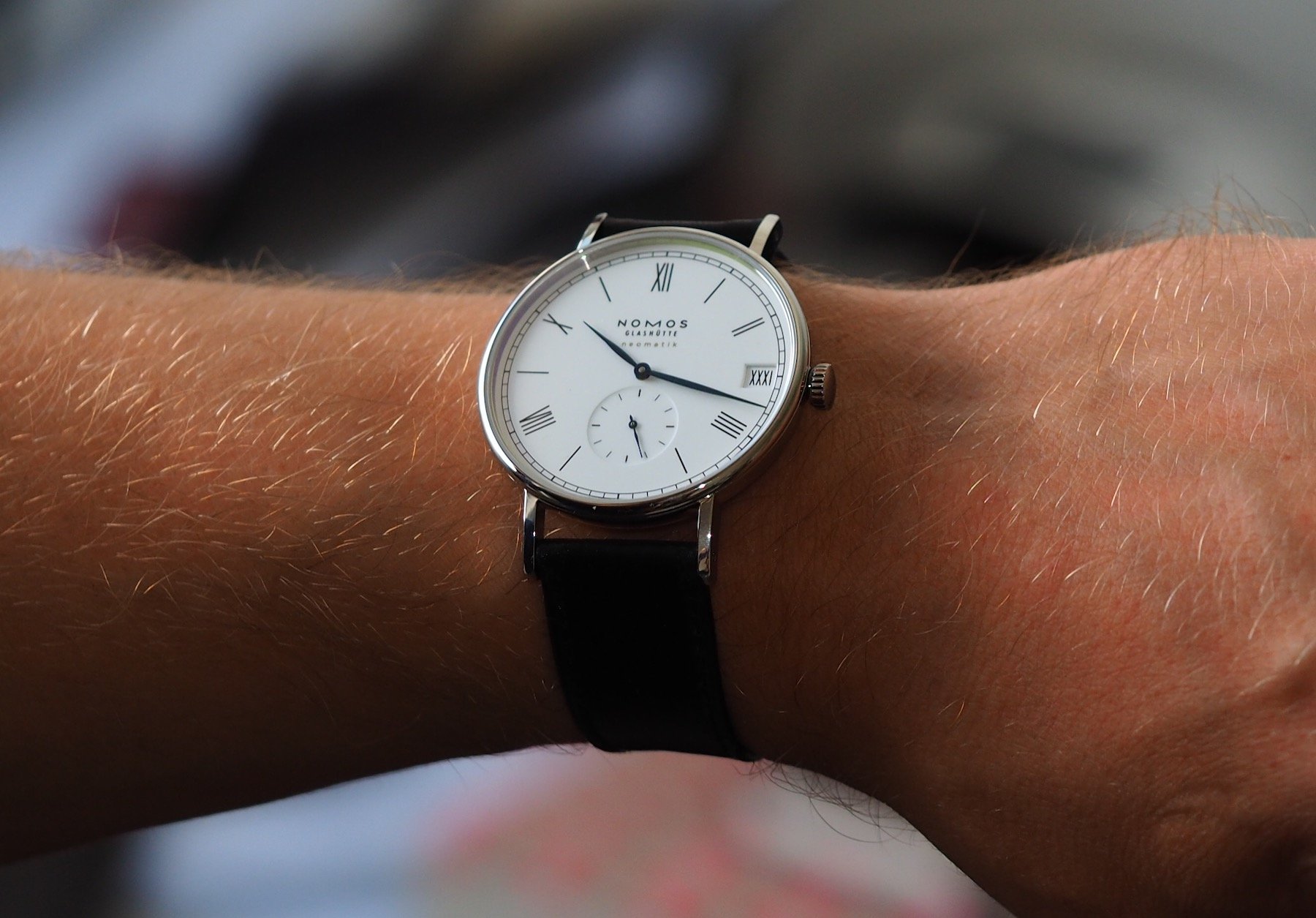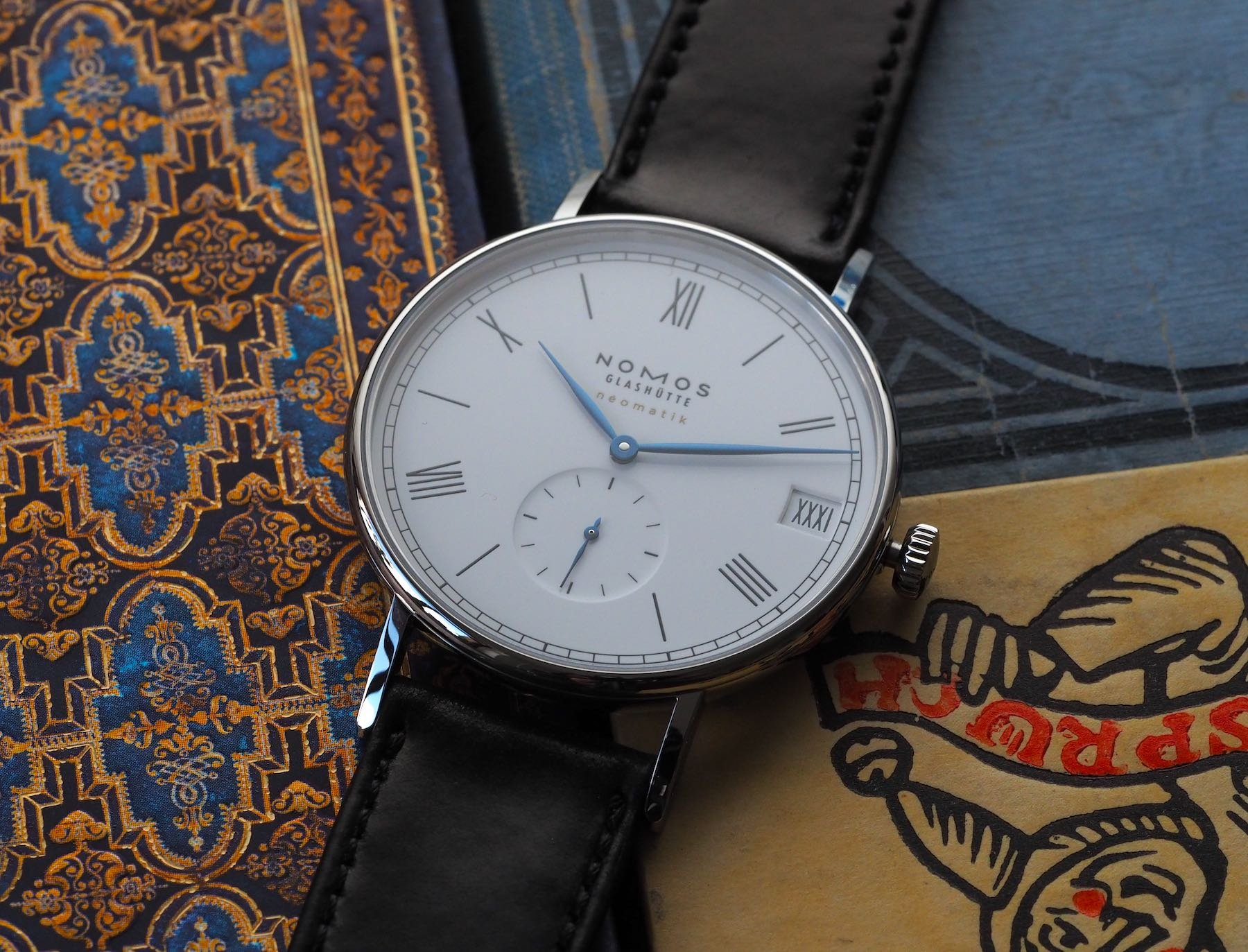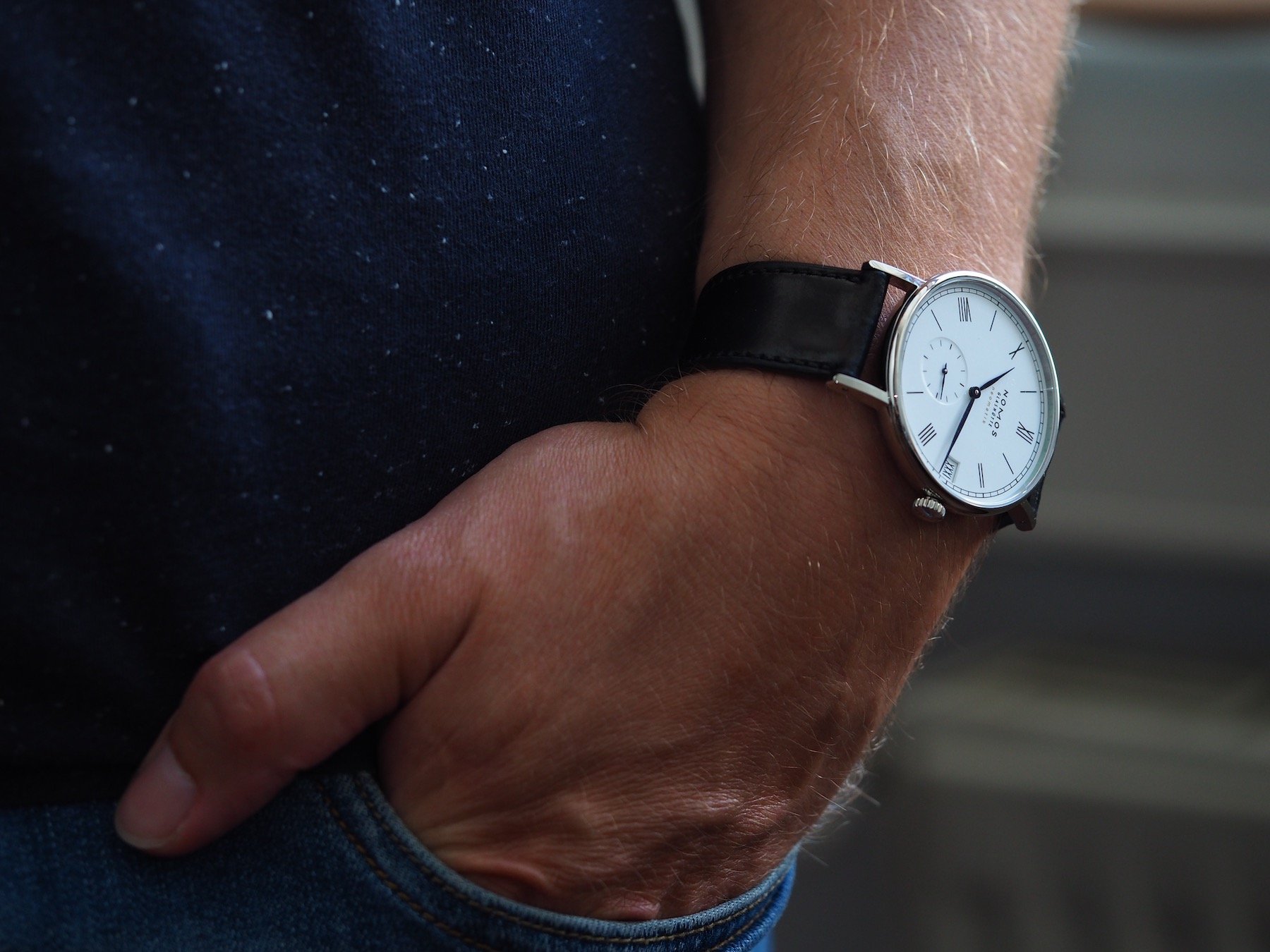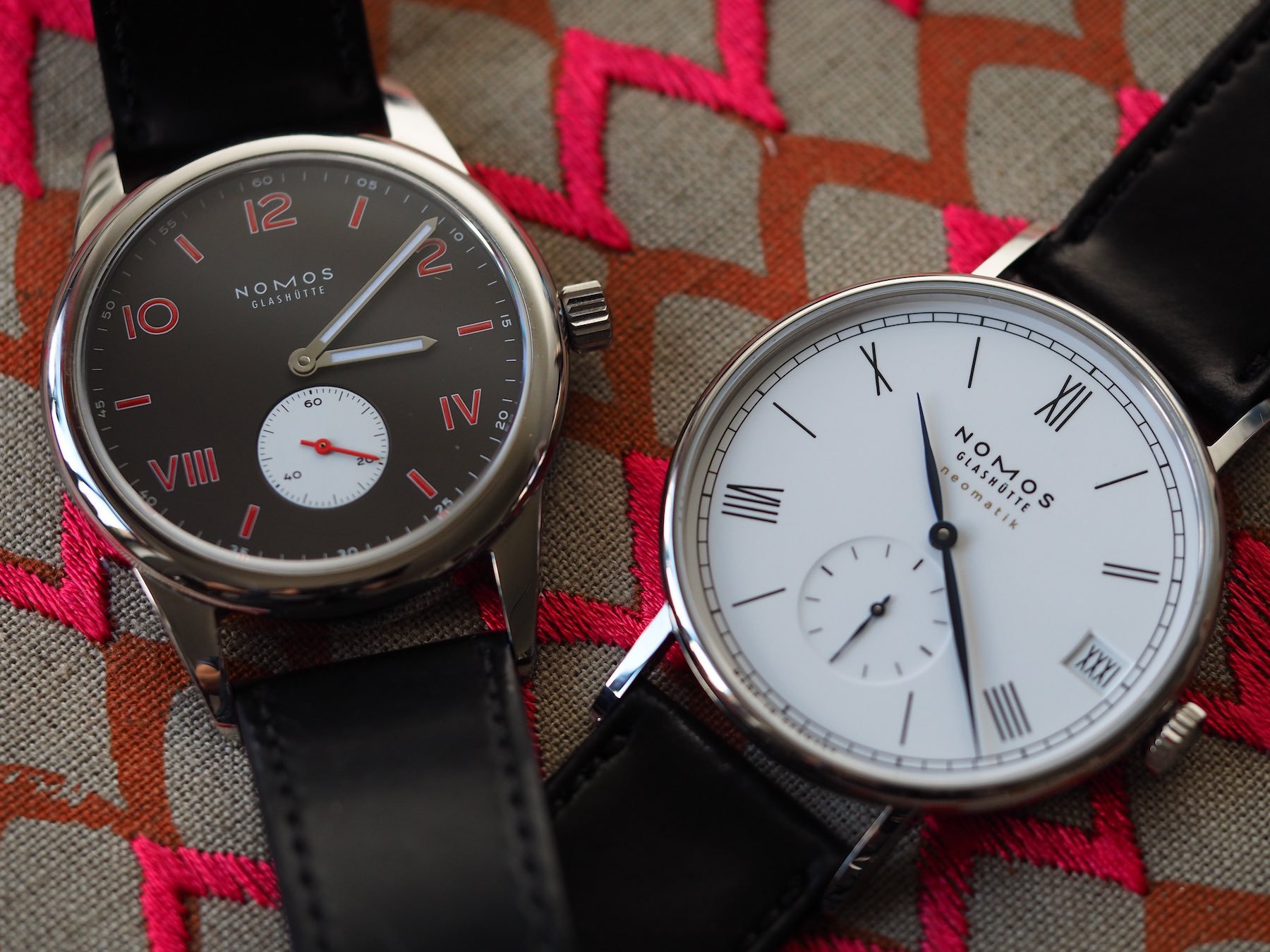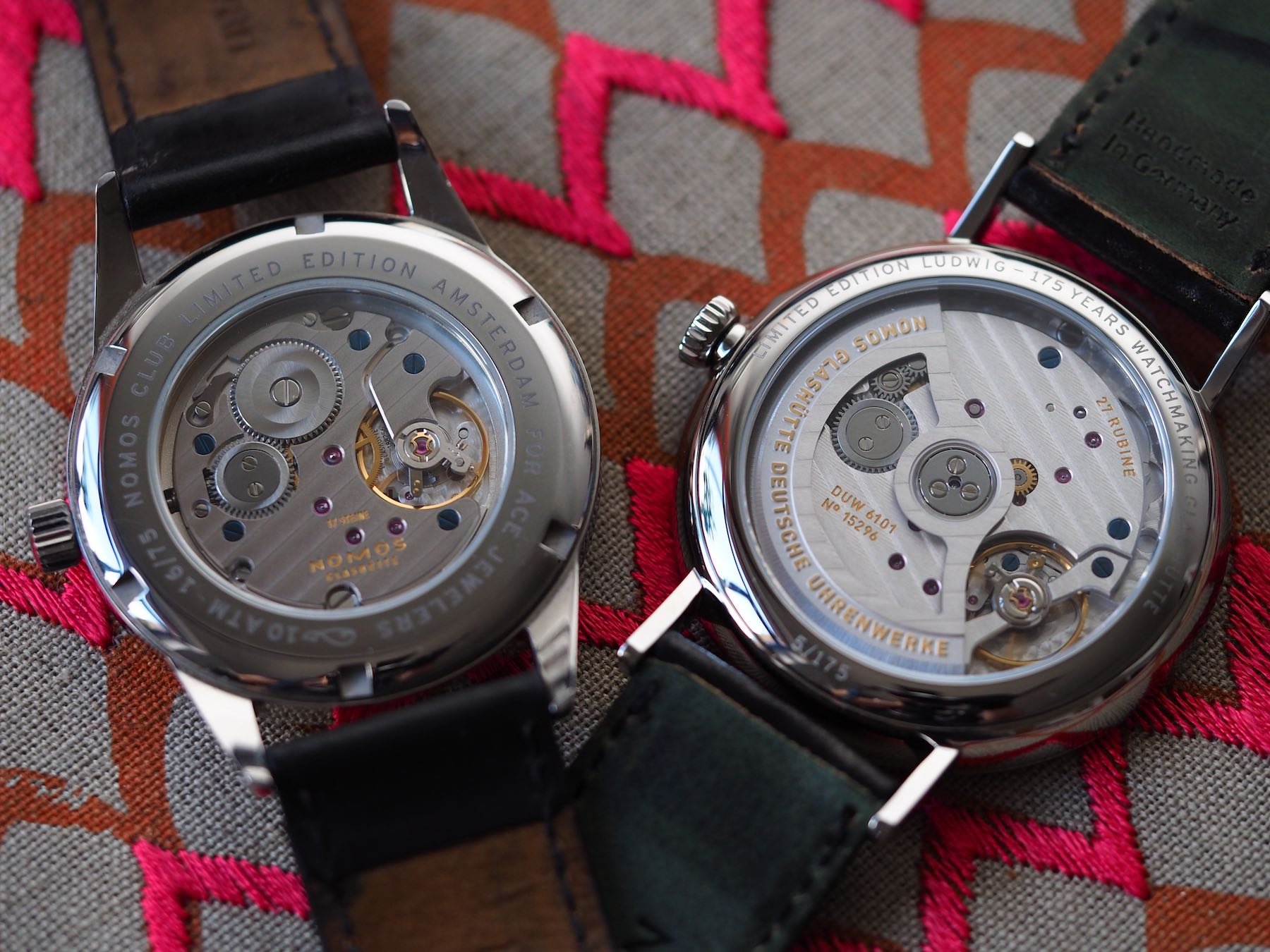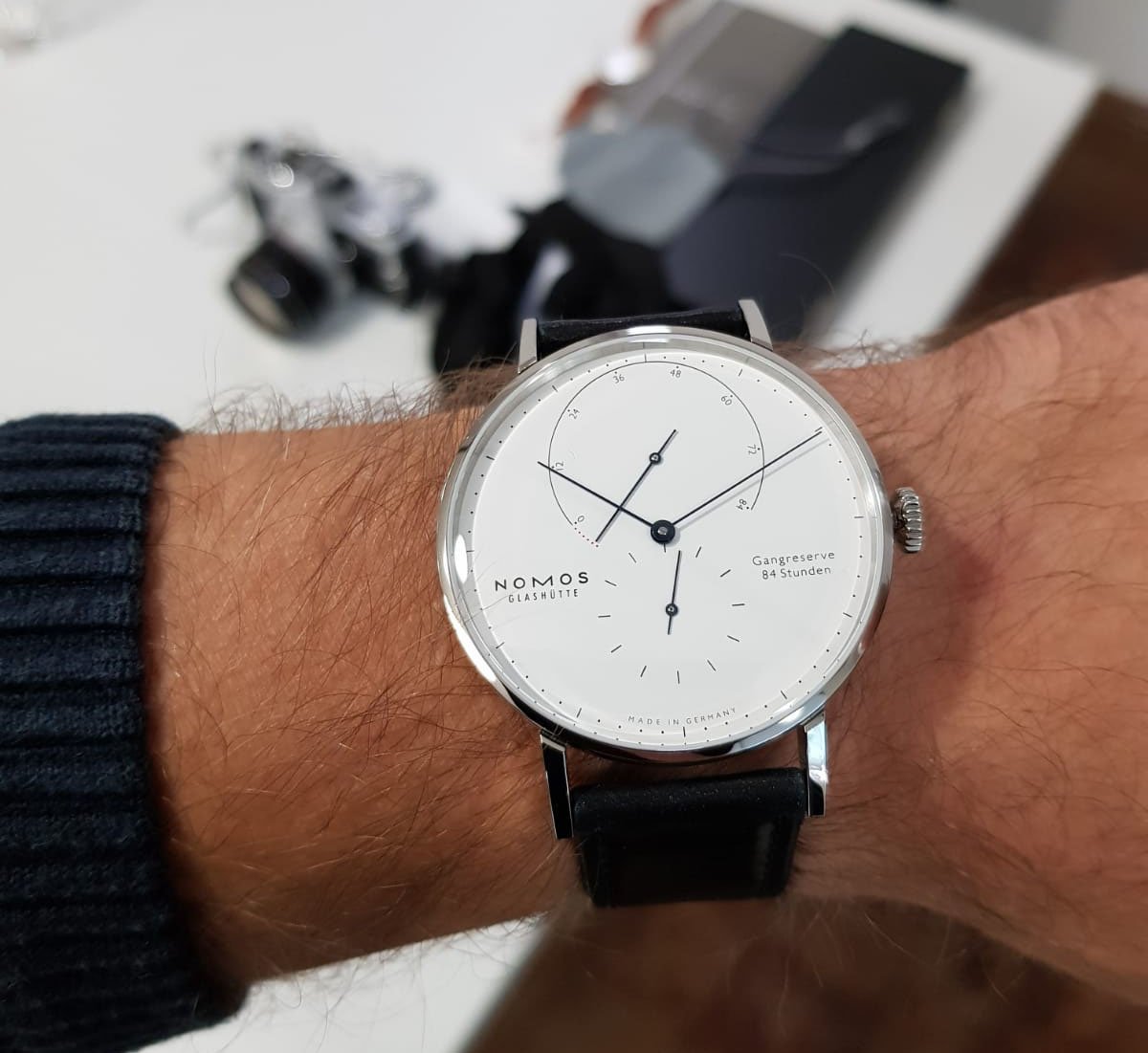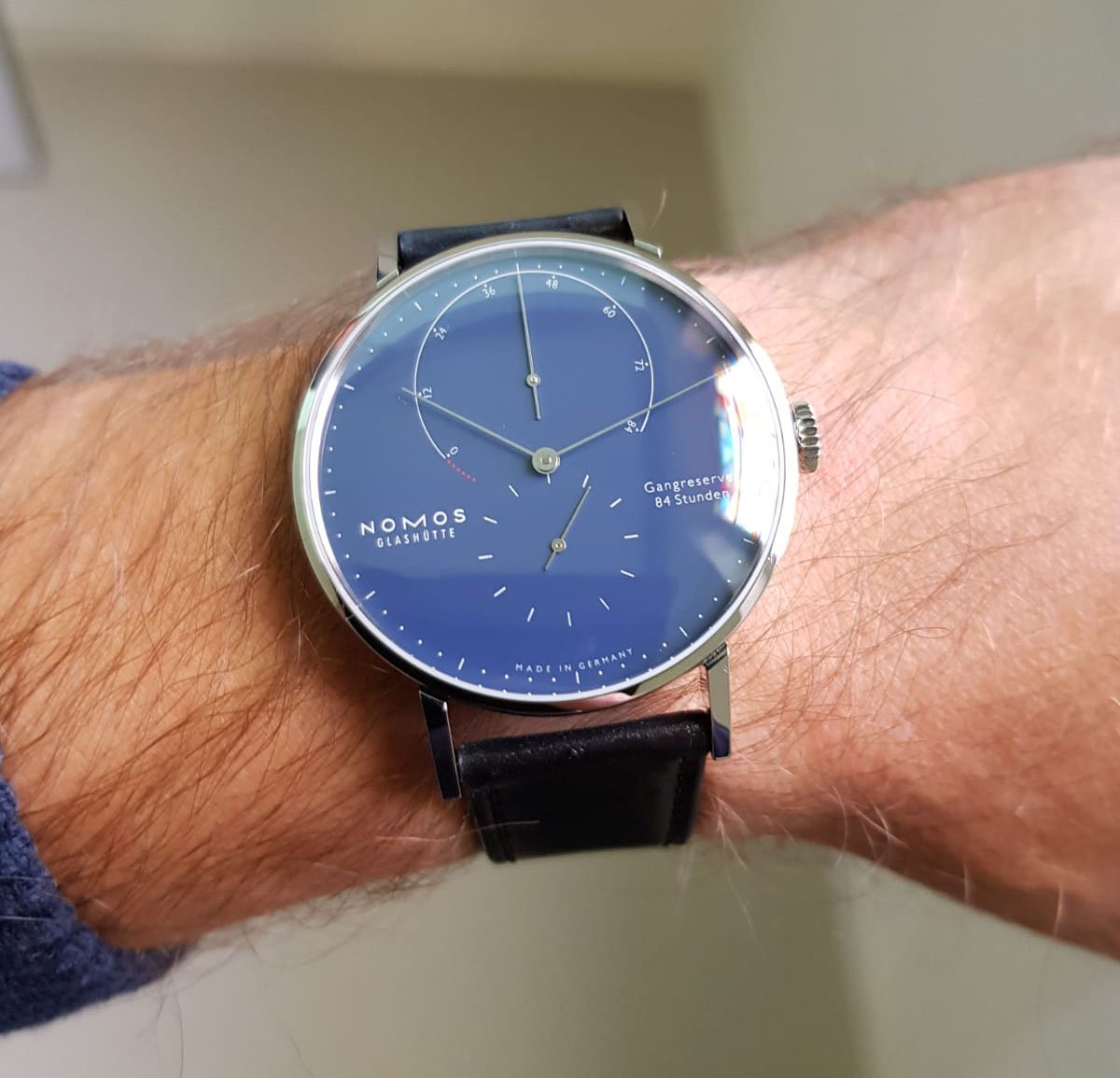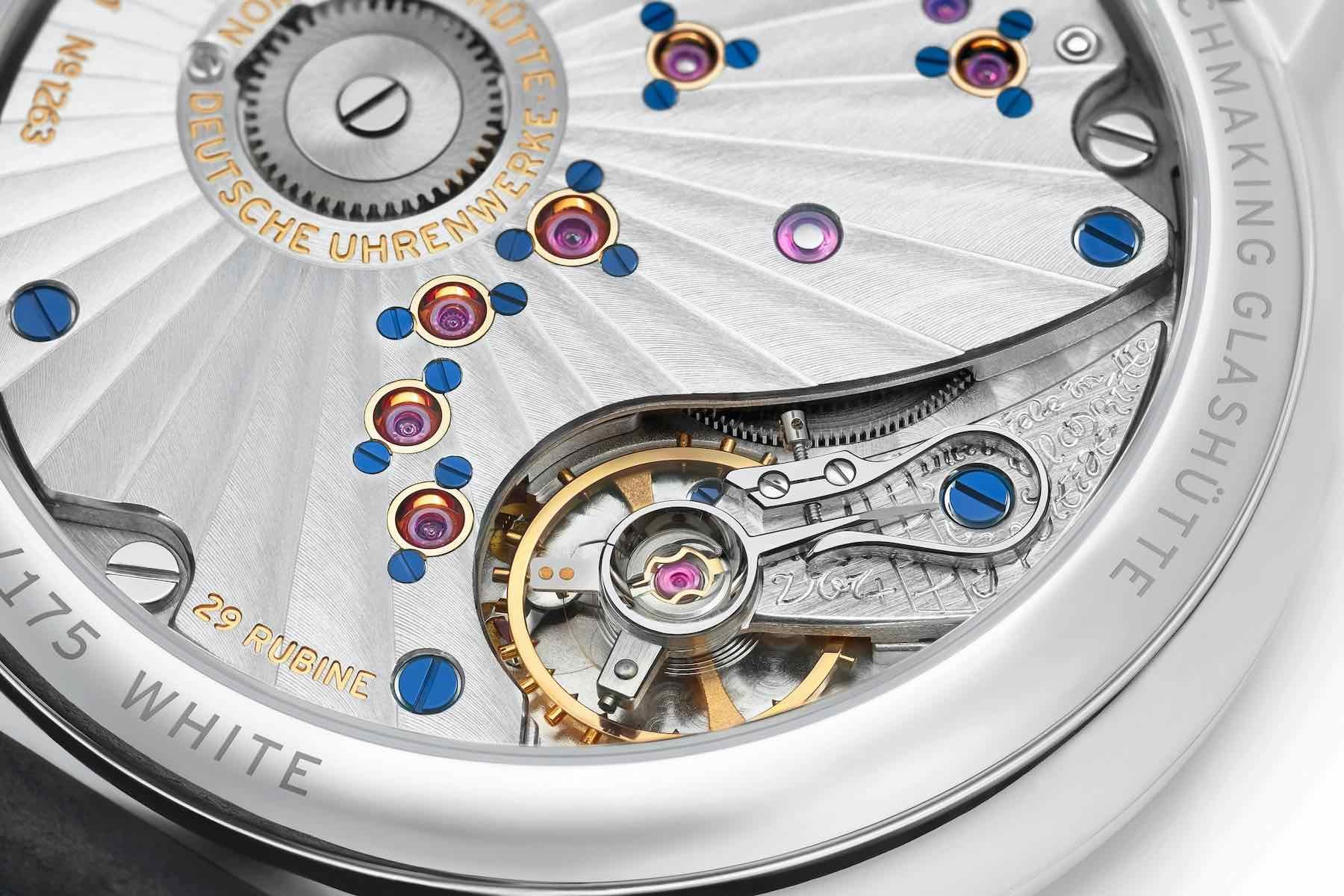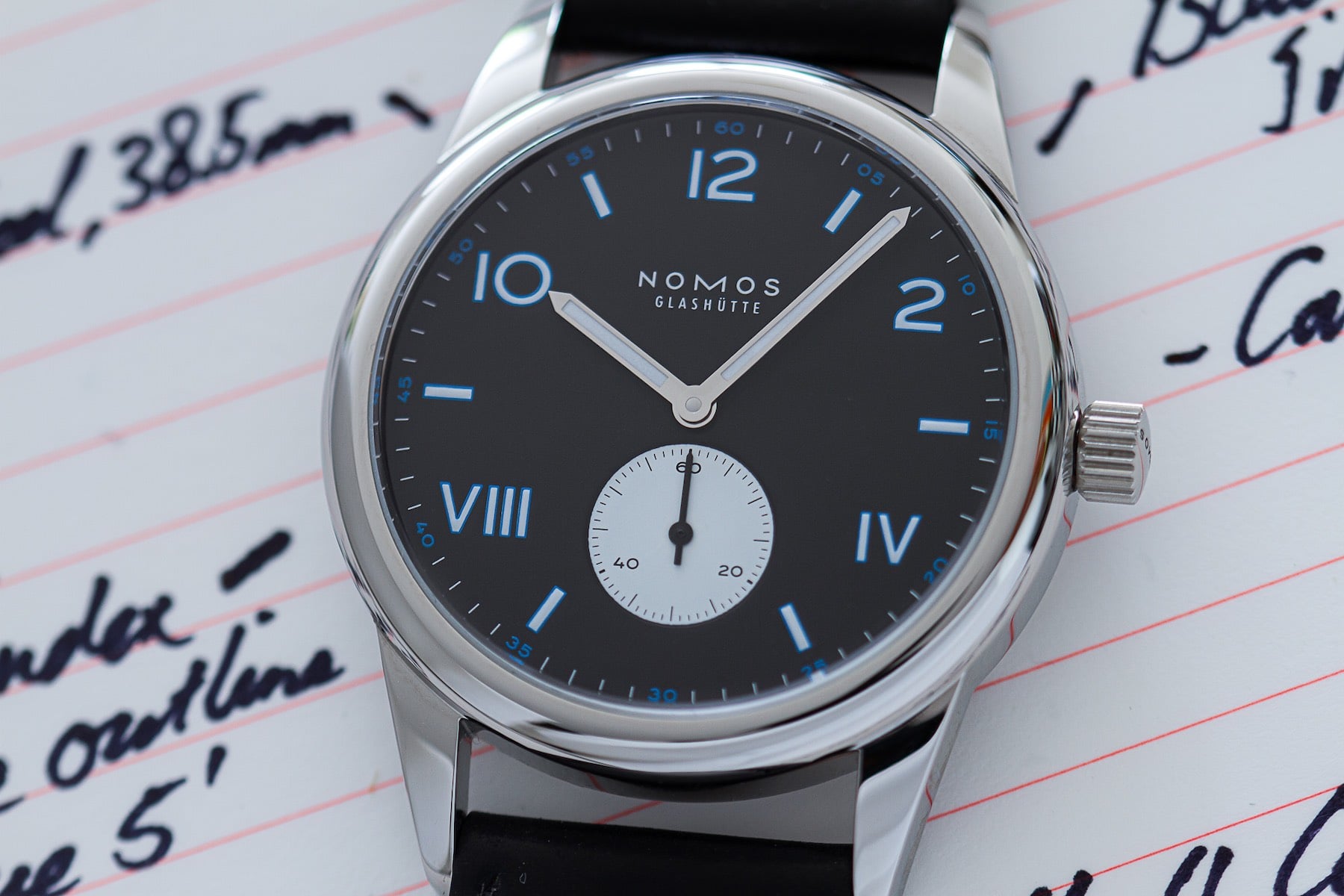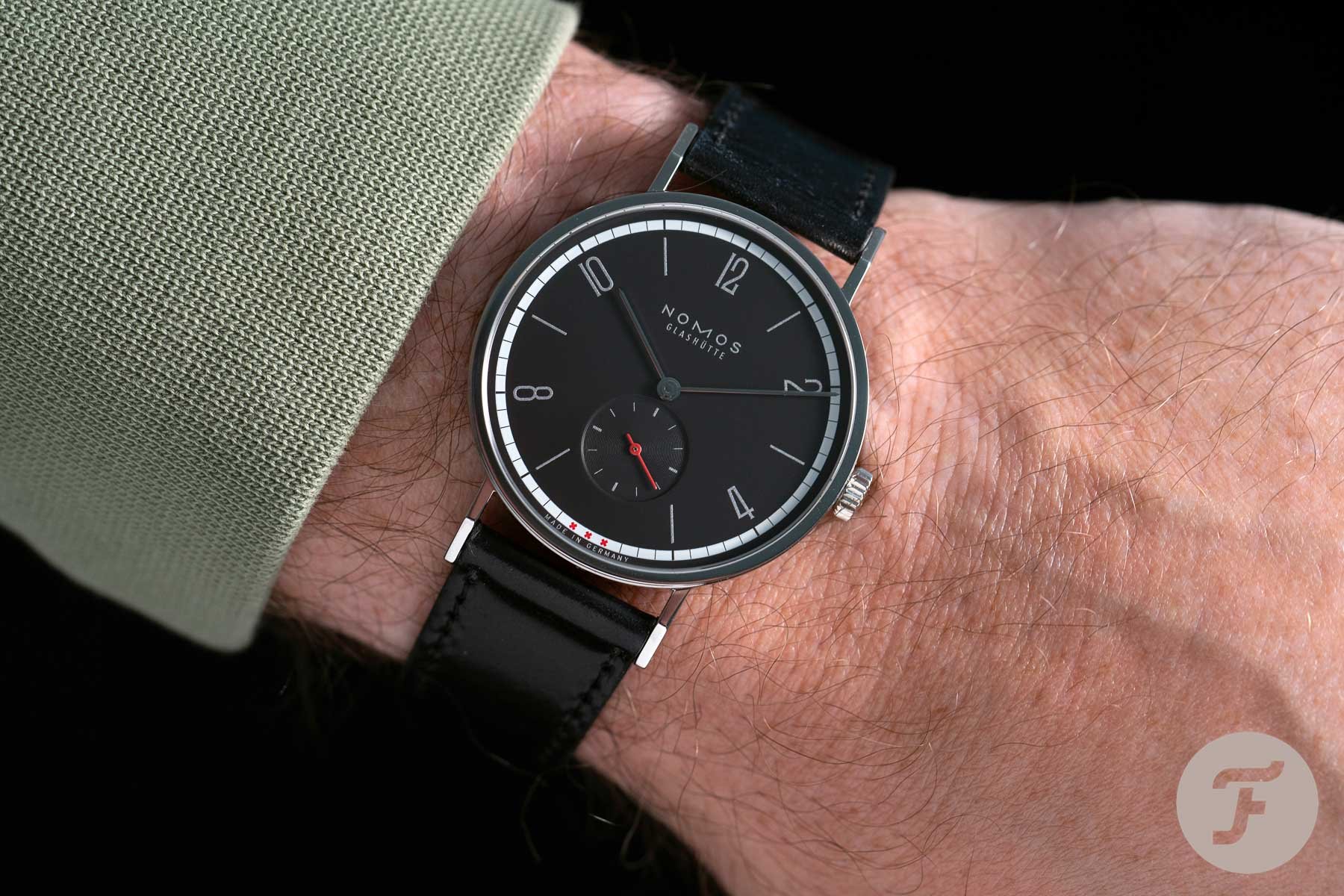NOMOS Glashütte Rounds Out 2020 In Style
It’s been a funny old year. Everyone has had to react and adapt to unforeseen challenges. The watch industry could little have imagined the shift in the landscape. While restructuring release calendars has proved a challenge for all, some brands have had the added stress of managing an unpredictable market in an anniversary year! For NOMOS Glashütte, 2020 marks a very special year in the history of its hometown. Glashütte is celebrating 175 years of watchmaking. Thankfully, despite all the tumult of 2020, NOMOS has done that sleepy Saxon treasure-trove justice…
I’ve very much enjoyed covering the releases of my former company this year. There have been some solid additions (like the introduction of new Tetra colors), some massive improvements (the Ahoi neomatik for Doctors without Borders really came of age this year), some fitting tributes to Glashütte’s watchmaking heritage (a series of glossy-dialed Ludwigs), and the jaw-dropping release of the NOMOS Glashütte Lambda in steel.
I was honored to be invited to the Lambda release event. It took place during a brief window of respite from the hokey cokey lockdowns we’ve all been facing this year. Housed in the recently-renovated church upon the hill, this new location is a powerful string to NOMOS Glashütte’s bow. An on-site facility dedicated to receiving guests, launching models to the press, and throwing whizzbang parties is just the tonic for an otherwise somber year. But let’s take this opportunity to look back upon the bright spots NOMOS was kind enough to gift us in Glashütte’s 175th year of watchmaking excellence.
https://www.youtube.com/watch?v=sFigR2ghB2k
NOMOS Glashütte Ludwig Neomatik 41 Date Celebrates Watchmaking
The NOMOS Glashütte brand has changed drastically over the past decade. With a huge investment made to bring manufacturing of almost all components in-house, the small, Saxon independent has carved a very special place for itself in the German watchmaking canon. And now, with the release of three special Ludwig models, NOMOS Glashütte pays homage to the story that led to its foundation 30 years ago…
When NOMOS Glashütte was established following the fall of the Berlin Wall, it was part of a movement designed to stimulate the renaissance of Saxon watchmaking. It succeeded. Now, three decades after the brand’s birth, Glashütte is booming. Other brands such as A. Lange & Söhne, Glashütte Original, Union Glashütte, Moritz Grossmann, Mühle Nautische Glashütte, Tutima, and more have combined to make the sleepy town the capital of German horology.
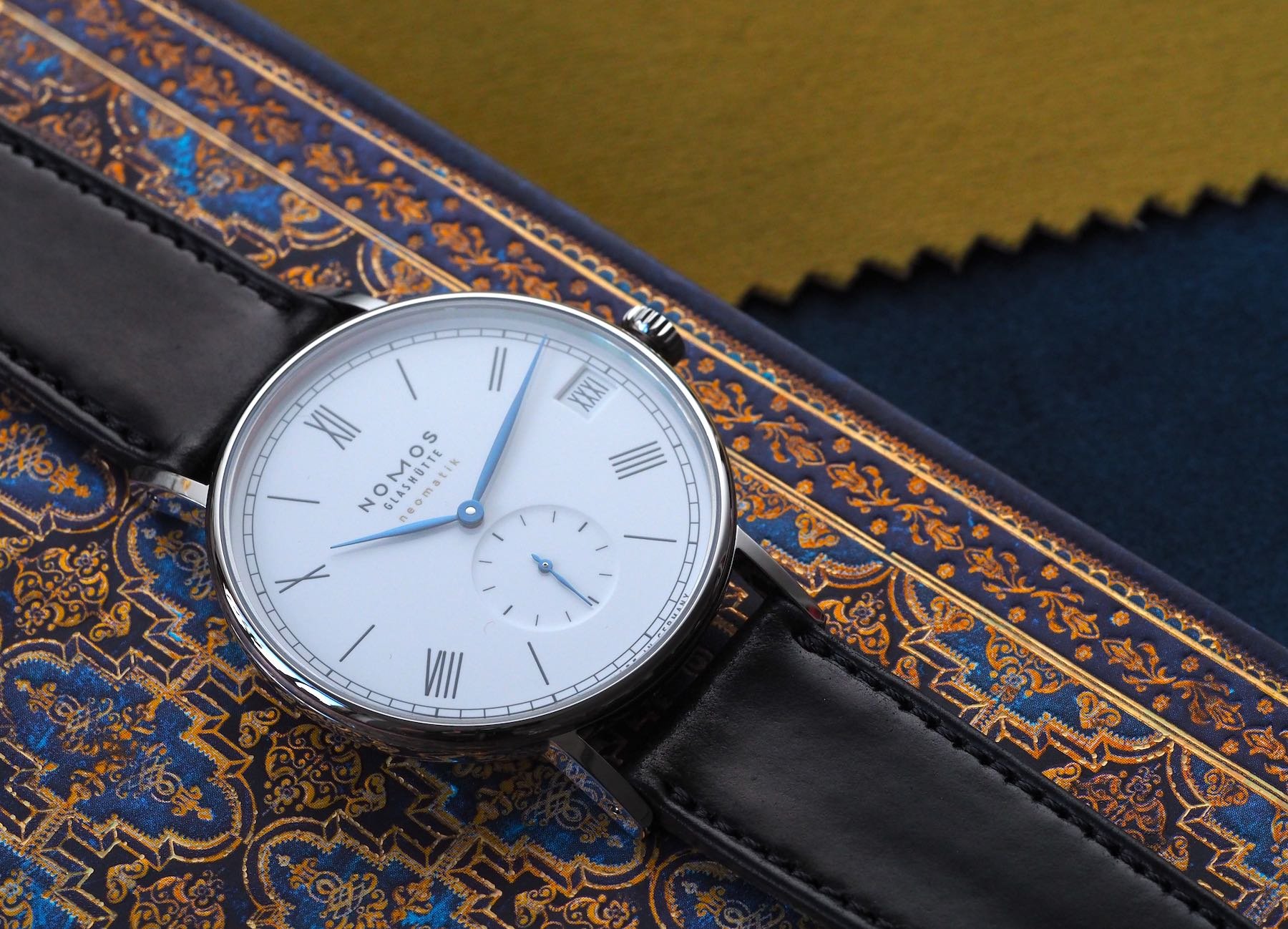
A special charm
For watch nerds like me, NOMOS Glashütte holds a special charm. During its formative years (and right up until about 2015), NOMOS was a design-led brand that sought to provide clients with a finely crafted luxury watch at a reasonable price. Almost all of the components were bought in. The watches were, nonetheless, widely regarded as an absolute steal in comparison to a Swiss counterpart. That started to changed when NOMOS made the push towards independence from its suppliers and in-house manufacturing with the release of its first in-house movement in 2005.
The neomatik era
This pleasant balance remained for the best part of a decade. Prices had crept up but they were still affordable. Furthermore, the increasing presence of affordable in-house movements in the collection was a boon to the brand’s reputation. Whether the die-hard NOMOS fan from the ’90s cared about that, however, was less clear.
In 2015, NOMOS Glashütte released the DUW 3001 neomatik movement. The ultra-slim (3.2mm) automatic movement was conceived as the core caliber for an independent future. It was smartly designed so that its central architecture could be built around to add complications as and when it was necessary.
In 2018, an enormous, satellitic date complication was added to the neomatik family. The DUW 6101 movement was an instant success, offering NOMOS a larger movement to fill more “modern” sized watches that the market (seemed to be) calling for. And here we are. Say hello to the 41mm NOMOS Glashütte Ludwig Neomatik 41 Date.
No longer a shrinking violet
The Ludwig family has been in the NOMOS catalog since 1992. Historically speaking, it lags behind the ever-present Tangente and deliciously curvaceous Orion families when it comes to popularity. The fourth original family — the Tetra — has always benefited from the low expectations one should naturally attach to square watches. As such, it seems a lot more popular than the Ludwig simply because it is awesome “for a square watch”.
Meanwhile, the affably anachronistic Ludwig is the Marmite sibling. If you love Roman numerals, the Ludwig is the only NOMOS for you. If you don’t? Well, grab the catalog and browse through all the other families the brand has created especially for you…
Embrace and reject the past
The stuffier reputation of the Ludwig is, however, no more. This new trio of models aims to simultaneously embrace and reject the past. The most obvious update to the design can be seen in the leaf-shaped hands. These replace the thin pencil hands of old. I personally preferred the thinner hands (and have secretly had a crush on the Ludwig 33mm for years) but the wider, more dominant presence of the leaf-shaped indicators certainly gives the dial a bit more “oomph”. More to the point, however, is the case diameter. The 41mm version (actually 40.5mm wide but only 7.7mm thick) is so massive on the wrist it is fair the say the Ludwig is no longer a shrinking violet.
I got my friend to strap it on his small-to-average (17cm) wrist so I could shoot a few shots of it being worn. It is, as you can see, a bit of a wrist monster. The thin and politely sized lugs do make this watch far more wearable than it would have been had it been fitted with bulkier, more arresting lugs like the Zürich model, for example, but even so, the new Ludwig leaps out from the wrist like a bright light in the dark. That enormous expanse of dial (with an enamel finish as opposed to NOMOS’s traditional silvered style) is not for everyone. However, modern trends suggest it is a dial for the many, not for the few.
The Roman date
Aesthetically, the thing I find most interesting about this model is the Roman date. That is pretty rare. And while I can live without a date on most of my watches, it is becoming something I appreciate more and more. Normally, I want the date to be as obscure as possible. I don’t even want to see it. I want it to be there when I need it, but otherwise, it is at liberty to hide itself as effectively as it sees fit
Here, however, NOMOS embraces a different strategy entirely. The creation of the DUW 6101 meant NOMOS was finally able to locate a legible date at 3 o’clock. If form should follow function, then a date at 3 o’clock makes sense (for a righthanded user). That’s the part of the watch that protrudes first from the cuff and, therefore, is the first area of the dial that can be read.
In the early days, NOMOS’s movements were not large enough to make an aesthetically pleasing (or even particularly legible) date window at 3 o’clock, so the brand opted for symmetry instead. Incidentally, that also enabled designers to fill the gap between the sub-dial and the edge of the dial at 6 o’clock with something practical.
With the NOMOS Glashütte Ludwig Neomatik 41 Date, the large (frankly unmissable) date window is the star of the show. Its Roman numerals continue the dial theme and hammer home the fact that this is an unapologetically refined modern classic. Love it or hate it, it’s hard not to respect it…
A new, new brand
NOMOS Glashütte has matured into something a long way from the brand it set-out to be in the ’90s. It’s hard to believe that even Roland Schwertner — the visionary founder of the brand — could have expected such a development, but having worked in his presence for three years I cannot exclude the possibility entirely.
The NOMOS of today is not, nor can ever again be the NOMOS of yesterday. The company has invested heavily in independence. It has invested heavily in innovation. The brand’s future success is now tied to its existing clientele adapting to a new mission statement and a new (higher) price point, while simultaneously poaching new buyers away from other brands known for high-end watchmaking in this segment. Can the NOMOS Glashütte Ludwig neomatik 41 Date do that? At €3,300 it has its work cut out. But look for it to have some success in the DACH region among more conservative customers. The fact that this very special model will be limited to just 175 pieces will also surely result in a fast sell-out… Read the full article here.
NOMOS Glashütte Ludwig 38 And 33 Duo Enamel White Editions
NOMOS Glashütte seems to have developed the enviable habit of slowly shifting into the perfect position over a series of several releases. It appears as if the brand is triangulating itself towards an ideal fusion of styles and innovations via a series of incrementally different watches. I’m well aware that this “ideal” result is totally subjective. However, I think it is interesting to observe a brand evolving in the open market. While the R&D process behind watch design is painfully painstaking at the best of times, listening to the reviews of customers and critics prior to releasing a follow-up certainly gives a brand the chance to pivot if it is absolutely necessary.
A plan long in the making…
However, I doubt that was the case here. I would wager these NOMOS Glashütte Ludwig models have been in the works for some time. They arrive on the heels of the stunningly successful launch of the Lambda in steel. That model also used an “enamel” dial, as did the previous celebration of Glashütte’s 175th anniversary of watchmaking — the NOMOS Glashütte Ludwig Neomatik 41 Date mentioned above. Deploying this concept on the ever-popular 38mm diameter was a logical step, but the inspired move, in my opinion, at least, was dressing-up the more recently-released 33mm “Duo” model with a glossy dial.
Two hands are better than three?
The sub-seconds dial commonly seen on German watches was seen as an almost indispensable mainstay of NOMOS Glashütte’s brand identity for the first three decades of its existence. But last year’s release of the Duo collection changed that. The original Duo line removed the sub-seconds dial of the four original models that put NOMOS on the map in the early ’90s. The Tangente, the Orion, the Tetra, and the Ludwig were all put forward for the experiment. This new look breathed life into the 33mm line. It was an unexpected and, quite surprisingly, satisfying endeavor.
Inspired by the earliest German pocket watches, the sub-seconds style has become central to almost all brands operating in Germany. The reason? It is not motivated by aesthetics alone. There is a practical reason behind it. By preferring a sub-seconds hand as opposed to a centrally-mounted seconds indicator allows watchmakers to create thinner calibers. If German watchmaking can be typified by one unifying trait it is that reliability and wearability always come out on top.
What I like about these releases in comparison to the 41mm neomatik model, is the reversion to the classic stick hands for which the Ludwig is famous. The 41mm anniversary model employed leaf-shaped hands. I wasn’t such a huge fan of them personally but did feel they looked at home on that watch in particular. To me, the stick hands used in these models give the design a bit more coherence.
They also give a bit more prominence to the novel dial finish. Rather than using vitreous enamel for its “enamel” dials, NOMOS use an enamel paint, which has a similar luster but is far easier to produce in volume runs. It is a fine substitute that achieves a similar aesthetic. I would certainly like to see real, Grand Feu dials deployed on the Lambda (in steel) at some point, but here, especially given the price point, such a venture would not have made sense.
A full complement of numbers
The other major difference that I really like personally, is the absence of the sub-dial on the 33mm Ludwig. Why? I love the full 6 o’clock Roman numeral. I think it gives the dial a brilliant balance. Of the four models given the “duo treatment” thus far, I think the Ludwig is my favorite for that reason. More balance is added to that dial with the absence of that sub-dial than any other. I believe that is because the 6 o’clock numeral fans out towards the center. The Orion has a stick marker. The Tetra and the Tangente models have a boxy Arabic 6, which does not stamp its presence on the dial in the same way. That Roman 6 is a real boon to the Ludwig. In my opinion, it makes this latest Ludwig 33 the pick of the collection, for men or women alike.
Spot the difference…
Pricing and availability
These two models (both unlimited) are the latest (and possibly last) watches to be released to mark this very special year in Glashütte. The enamel dial theme has been a welcome departure from the norm. It is pleasing, also, that a couple of these anniversary editions have made it into the regular catalog. Both watches are hand-wound (see above). Both are powered by the brand’s in-house alpha caliber. The Ludwig 33 duo enamel white retails for €1,060 for stainless steel case back/€1,280 for sapphire crystal case back (an amazing price for an in-house creation boasting an open case back and a somewhat special dial). Meanwhile, the Ludwig 38 enamel white commands a price of €1,580… Read the full article here.
NOMOS Glashütte Lambda IN STEEL With Three Dial Colors
I worked for NOMOS Glashütte for three years. I traveled all over the northern hemisphere on behalf of the brand. Wherever I went, the questions were always the same. “Will NOMOS ever make a bracelet?” As it turns out, yeah, the brand did exactly that in early 2019. I thought it was fine, but I never needed my NOMOS watches on bracelets anyhow. No, I was more interested in the second (at the time), ridiculous question: “Will NOMOS Glashütte ever make the Lambda model in stainless steel?” Hahaha. No. Never. Or so we thought…
https://www.youtube.com/watch?v=MKx0Agj9myo
This year, NOMOS released the Lambda in stainless steel. I love the Lambda model. Specifically, I love its movement — the DUW 1001. This is the movement NOMOS said would never be delivered in anything but a gold case. Well, the brand changed tack (finally). Now, we have one of the very best dress watches on the market to enjoy.
Simply better
I always preferred the 39mm Lambda, but, in that regard, I was in the minority among my former colleagues. The vast majority of people I met were adamant that the 41mm (actually 40.5mm×8.9mm) Lambda is simply better. And I do see their point from a “purity of design” perspective. The watch was designed to be big. And although 41mm sounds positively humble on paper, be warned that this thing is a wrist devourer. It is, without a shadow of a doubt, the biggest 41mm object you will ever encounter. And it is odd because that apparent dimensional bloating gives it a huge amount of presence while its subtle and precise dial design keeps things humble).
…this one is going to fly, fly, fly off the shelves.
In a nutshell, this one is going to fly, fly, fly off the shelves. And so it should. The DUW 1001, with its sun-ray Glashütte ribbing, screw-down gold chatons, and hand-engraved balance cock is a thing of beauty. In the gold cases it was barely attainable (and a reach for even the most ardent NOMOS lover). In steel, at this price, it is the best value dress watch on the market right now. There. I said it. And I’m sticking to it. I think it’s a fair position considering this stainless steel version is priced at €5,800.
Seriously affordable
Here, however, NOMOS has completely upended the apple cart. And as apples roll around my ankles I find myself staring at this release in wonder. I am not just amazed that it has, at long last, come to pass, but gobsmacked that the Lambda is now seriously affordable. Yes, this is still a luxury product and a real privilege to own, but at under 50% of the Lambda’s previous cost, I cannot imagine my collection will remain without one for much longer (especially if this opens the door for future variations of the concept, as I imagine it will)… Read the full article here.
And don’t forget the Ace special editions…
Our good friends in Amsterdam produced their fourth and fifth NOMOS collaboration models this year. What a story. What a success! Both models were really beautiful additions to the brands’ collaboration catalog. When it hit the market back in May, I wasn’t sure anything could top the NOMOS Glashütte × Ace Jewelers Tangente 38 Amsterdam Limited Edition Watch. I was wrong (as usual). The October drop of the brand’s second NOMOS collab of 2020 was a rapid sell-out. And given the handsome, icy blue accents of the NOMOS Glashütte × Ace Jewelers × @NomiesForLife Limited Edition Club, that was no surprise.
This is a partnership that has, over the past four years, borne much fruit. There is no sign of it slowing down, either. Enthusiasm seems high on both sides, and so it should.
And that enthusiasm should carry through to the entire NOMOS Glashütte organization. It hasn’t been the easiest few years as the small independent manufacture has pushed hard towards greater autonomy. New in-house movements (you can read about those here) and a massive global expansion were necessary steps, but challenging times to navigate nonetheless. But after cruising through the stormy seas of 2020, looking, at least from the outside, confident in its ability and unflustered by their panicking peers, NOMOS Glashütte looks ahead to the 176th year of Glashütte watchmaking with optimism. Learn more about the brand here.
This is a preferred position post. Learn more.

